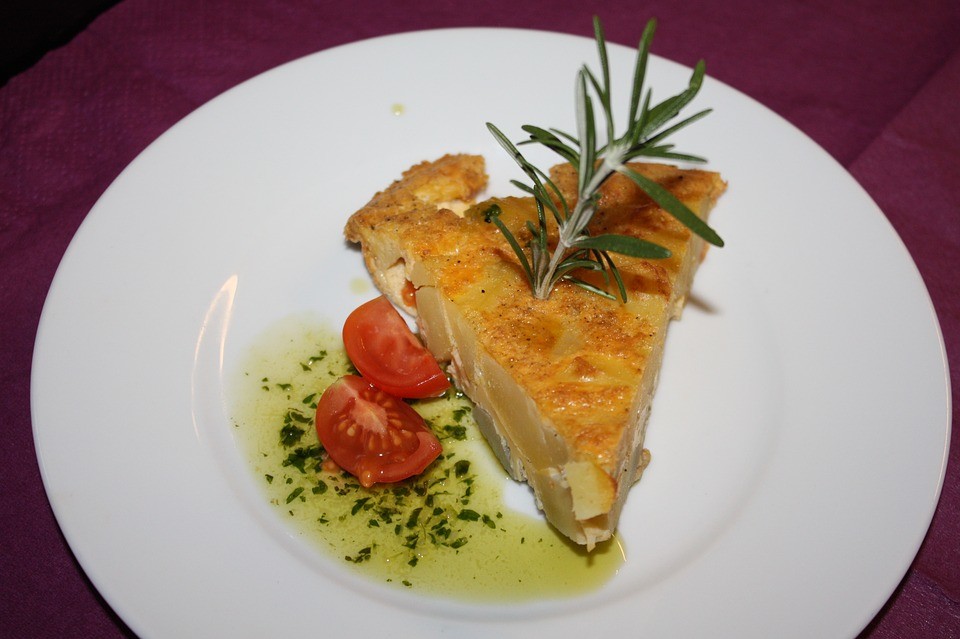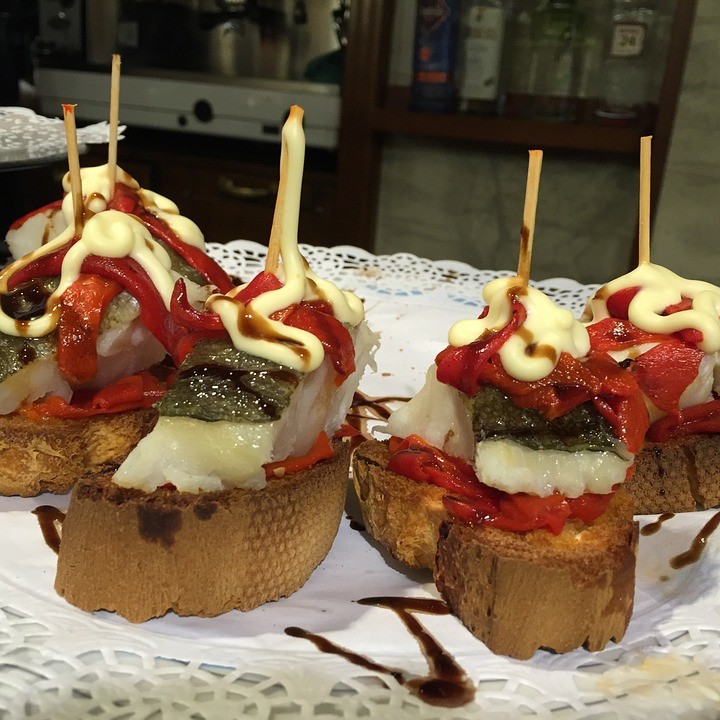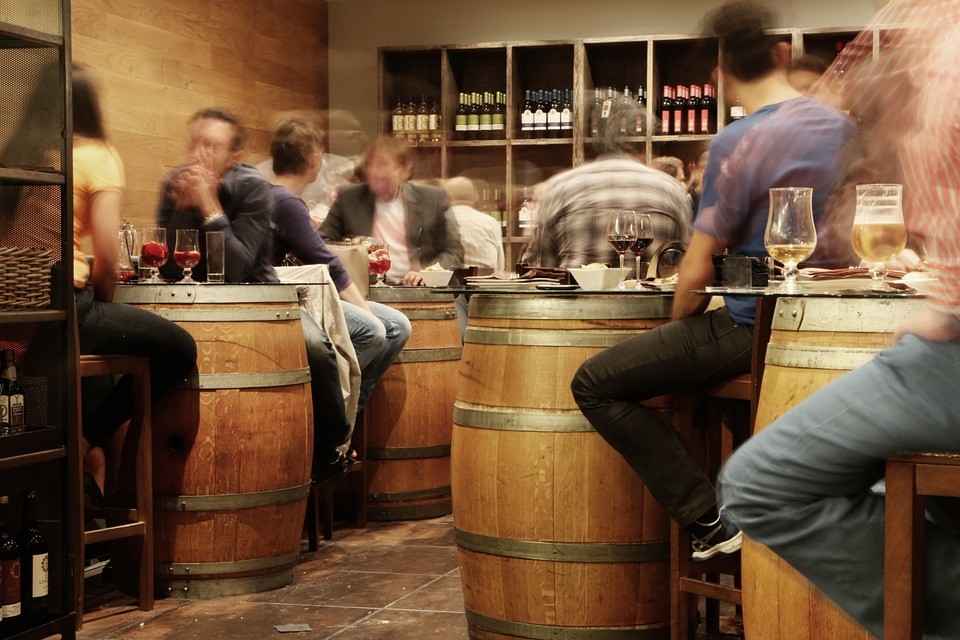Going for tapas in Spain
Hello fellow travellers! Today I want to talk to you about a great Spanish tradition linked to our rich cuisine, and I'm sure that you will love it and it will make you want to travel around Spain even more.
Surely you've already heard of tapas or appetisers. If not, I'll explain a bit about what it is: A 'tapa' (bar snack) is an aperitif that is served in bars and restaurants alongside drinks. Meaning, it is a small amount of food, as a taster, and it's usually eaten before food, although also before the evening meal. In case you are wondering, it doesn't have to be an alcoholic drink, it's also really common to have it with a refreshment.

It is a Spanish tradition to go out to bars and eat these aperitifs before food, which is known colloquially as 'el tapeo' or 'tapear' (eating tapas or going out for tapas). It's even complimentary in some Spanish cities and it is understood to be included with the drink. It is also usually noted that some tapas make customers more thirsty which makes them drink more in the establishment. If going out for tapas stretches on, it can become the meal of that day. Tapas can vary from one city to the next and 'el tapeo' doesn't have the exact same meaning in all the regions, because of this, later I will give you a few clues so you participate in the Spanish tradition. I'm sure you're already picturing yourself on a little terrace, enjoying the sun and the Spanish climate and getting to know the best cuisine of the country.

Tapas have become sign of Spanish identity and it is one of the first words that foreigners learn of the Spanish language. And speaking of that word, you are probably asking yourself where it comes from, why tapas are called that. It is believed that the name comes from a tradition that started in taverns. The wine glasses were covered ('tapar') with a bit of bread or ham so no dust or flies got in. From there, it's difficult to establish how and why 'el tapeo' started to exist, given that it has evolved over the course of history, and today has even reached haute cuisine.
Typical tapas that are served vary from some parts of Spain to the next, and also depending a bit on the weather, cold or hot tapas can be more common. Some examples of very common tapas are 'la tortilla de patata' (potato omelette), 'las rabas de calamar' (squid strips), 'las croquetas' (croquettes), 'las aceitunas' (olives), 'las anchoas' (anchovies), 'embutido o pequeños bocadillos' (sausage or small sandwiches) amongst others.

Now that you've got the word in your head, I will tell you something, that type of aperitif isn't always called tapas. In some zones of Spain it has another different name, or it has different characteristics that differentiate it from the usual tapas, but don't worry you'll find them easily enough.
Another of the more common names that they usually use to distinguish these types of aperitifs is 'pinchos' (or pintxos in Basque). This name is used mostly in the north, but, for example, in the place where I come from, in central Spain, it's common to call them this as well. 'Los pinchos' are normally a slice of bread on which the food is placed. Traditionally, the food and bread were put together with a toothpick ('un palillo') and that's where the name 'pincho' comes from, as you can see, something easier to guess than the origin of tapas.
In some cities in the north of Spain, pincho isn't served alongside drinks, but rather it is ordered separately or can be taken freely from the trays available in the establishment. Because of that, we also find places where the pinchos have specific toothpicks. After eating, those toothpicks are counted in order to charge the customer.

This last tradition that I'll tell you, has also extended out and there is even a franchise present in many cities in Spain and outside of Spain that works with this method: the Lizarrán restaurants.
One of the cities where I have been most able to accustom myself to this tradition is in Ávila. The tapas are free in this city and you can normally choose them as you like. This is really good because the tapas in some bars are quite big and therefore it isn't an expensive city. There's a lot of choice and you have the opportunity to try the most common dishes, like 'las patatas revolconas' (mashed potatoes). 'El picadillo de chorizo' (mince chorizo) is also common and other pork dishes, but don't worry if you don't like this type of meat because there are so many more options.
Probably the most common zone to go for tapas in Ávila is San Segundo Street. The reason being that this street is located right in the centre of the city, attached to the wall approximately between the gates of San Vicente and the Alcázar. In this stretch there are lots of bars and restaurants and in Summer it's common to see the street full of terraces and people. From this zone up to the Chinese Market Square (within the walled enclosure), you will find numerous bars and restaurants to eat tapas. Furthermore, the south of the city also is a place to try these aperitifs.
In Summer the festival of "Ávila en tapas" is celebrated in the city. Over various days, restaurants and bars that participate make a special tapas and participate in a competition. There is a card with the option that each restaurant offers so the customers can go by each of the establishments trying them, and then they can vote for their favourite. Many of these tapas contain 'avileña beef', a cattle breed from this area and which is the central component of Ávila cuisine. But still, I'll tell you that there are many more restaurants that participate and there are a wide variety of tapas. It is an option to try more novel options than the usual ones and with a more demanding and refined cuisine.
So, I've given you a really good reason to visit this city, that besides being beautiful and having an exceptional heritage, it offers the opportunity to enjoy Spanish tapeo.
It is common for cities or towns to organise a pinchos or tapas route to get to know different bars, either throughout the year or at a particular time or event. They also organise this route based on one particular ingredient. For example, in the town of El Hoyo de Pinares in Avila, there is a route of pinchos (tapas) in which the star ingredient is pine nuts, a key ingredient in the local gastronomy, highly sought after in the market and with which exquisite dishes are prepared.
I will tell you other Spanish cities in which I have also enjoyed this tradition:
- Granada: This beautiful city of Southern Spain is probably the most famous place throughout Andalucía to go for tapas and one of the best in Spain, in addition to them also being free.
- Madrid: The Spanish capital logically offers a large number of places and a great variety of tapas. It is perhaps one of the best places to try the famous 'patatas bravas'. You can also find some restaurants where they offer a type of sampling menu with typical Spanish taps.

- Santander: An ideal city in the north of Spain, where you'll already know the cuisine is exquisite. In Santander there is a tapas that sticks out amongst the rest: 'las rabas de calamar' (squid strips). Bars and restaurants compete to demonstrate which have the best 'rabas' of the city.
- Barcelona: the most touristic city of Spain and a great destination worldwide, so you'll be able to guess you'll find many places to go for tapas and try very different dishes, with the particularity of Catalan cuisine. Also, it's interesting to discover the different districts of the city and the tapas that each one of them offer. For example, in la Barceloneta district a kind of croquette known as la bomba is made. Each family or restaurant can have a different recipe, which we wouldn't get tired of trying. In this city, el tapeo becomes a way of socialising and meeting people from different parts of the world, to enjoy the trip even more.
- Segovia: The city known for its famous aqueduct, that attracts tourists from all over, is another one of the cities that offers these aperitifs for free. The most common places to go for tapas are la Plaza Mayor (the main square) and 'la calle de la Infanta Isabel', where there are lots of bars.
Photo gallery
Content available in other languages
- Español: Ir de tapas en España
- Italiano: Dove mangiare tapas in Spagna
Want to have your own Erasmus blog?
If you are experiencing living abroad, you're an avid traveller or want to promote the city where you live... create your own blog and share your adventures!
I want to create my Erasmus blog! →








Comments (0 comments)